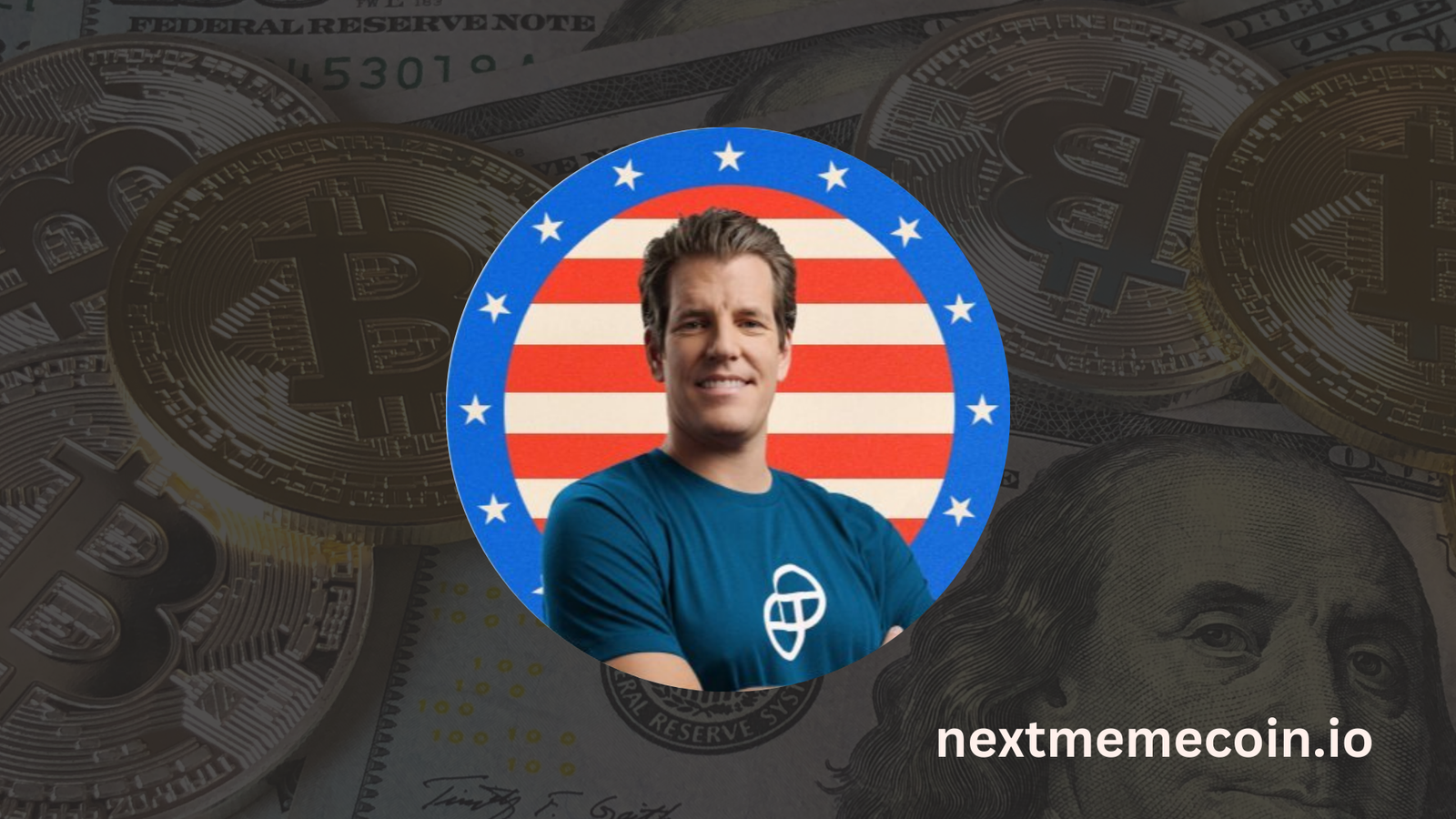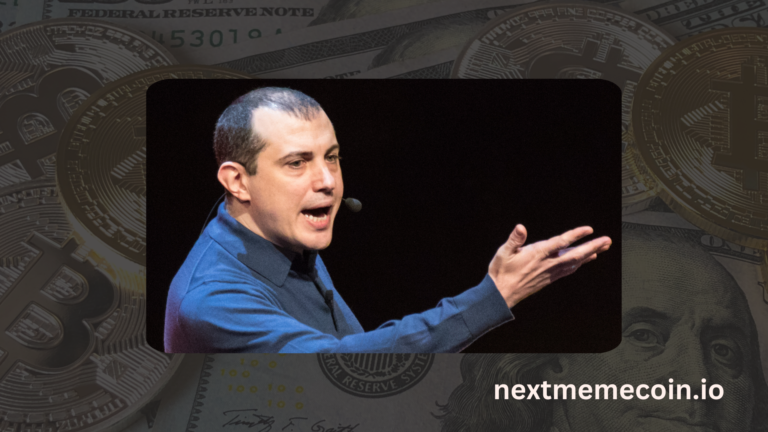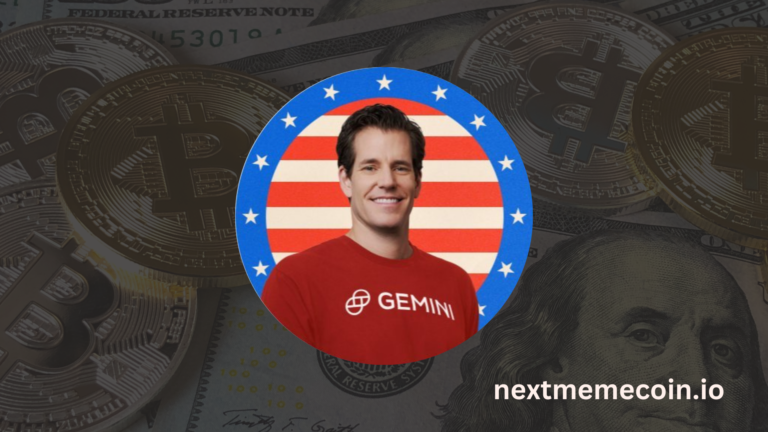Who is Tyler Winklevoss? Bio, Net Worth & Gemini’s Growth
Tyler Winklevoss is a name that echoes through the crypto cosmos like a steady drumbeat—a man who’s rowed Olympic waters, battled tech titans, and now steers Gemini, a cryptocurrency exchange that’s become a beacon of trust in a wild digital frontier. He’s not a lone wolf but half of a dynamic duo with his identical twin, Cameron, a pair etched into pop culture by a Harvard feud with Mark Zuckerberg and immortalized in The Social Network. Yet, Tyler’s story isn’t just tabloid fodder—it’s a saga of grit, vision, and a relentless push to bring crypto to the mainstream. For beginners stepping into the blockchain maze, he’s your guide: a former Olympian who turned a $65 million settlement into a Bitcoin fortune and built Gemini into a $7 billion powerhouse.
This isn’t about overnight fame or reckless gambles—it’s the tale of a calculated dreamer who saw Bitcoin’s spark in 2012 and fanned it into a flame. As of March 24, 2025, we’ll unravel his journey—from Southampton’s shores to New York’s crypto helm—his net worth, a treasure chest tied to BTC’s tides, and Gemini’s growth, a story of regulation, resilience, and reach. With USD figures anchoring the stakes, this guide is your portal to Tyler Winklevoss: a pioneer who’s less about flash and more about forging a future where crypto isn’t a gamble but a foundation. Let’s paddle into his bio, his wealth, and how Gemini rose from a bold idea to a global player.
From Southampton to Crypto’s Crest: Tyler Winklevoss’s Bio
Tyler Howard Winklevoss entered the world on August 21, 1981, in Southampton, New York, a tony coastal enclave where summer mansions whisper wealth. Raised in Greenwich, Connecticut, he and Cameron were born to Carol and Howard Winklevoss, a power couple—Carol a homemaker, Howard a Wharton professor and asset management maven overseeing millions. Tyler’s childhood was privileged but disciplined, steeped in structure and ambition. At six, he took up classical piano, playing for 12 years, a nod to his knack for precision. By high school at Brunswick, he added Latin and Ancient Greek to his repertoire, a geeky flex that hinted at a mind built for complexity.
Sports, not just books, shaped him. In his junior year, he and Cameron founded Brunswick’s crew program, a passion that’d carry them far. Harvard beckoned in 2000, where Tyler majored in economics, graduating with a BA in 2004. At Harvard, he rowed varsity crew, joined the elite Porcellian Club, and clowned with the Hasty Pudding troupe—a mix of brawn and brain. But 2002 brought tragedy: his older sister, Amanda, died at 23 from a drug-induced cardiac arrest, a loss that sobered the twins’ ascent. Rowing became their refuge, and by 2008, they’d competed in the men’s pair at the Beijing Olympics, finishing sixth—a feat of grit over glory.
Tech, though, was Tyler’s true current. In 2002, with Cameron and classmate Divya Narendra, he co-founded HarvardConnection (later ConnectU), a social network for students needing a .edu email—exclusive, like Harvard’s final clubs. They hired Mark Zuckerberg in 2003 to code it, but he ghosted them, launching Facebook instead. The twins sued in 2004, settling in 2008 for $65 million—$20 million cash, $45 million in stock (1.25 million shares). When Facebook IPO’d in 2012, that stock hit $200 million, a windfall they’d soon redirect.
Post-Harvard, Tyler earned an MBA from Oxford’s Saïd Business School in 2010, rowing in the Oxford-Cambridge Boat Race as an Oxford Blue. But crypto called louder. In 2011, Bitcoin—then $1—piqued his interest; by 2012, he and Cameron were buying at $10, amassing 1% of its supply (120,000–150,000 BTC). In 2012, they launched Winklevoss Capital, a VC firm seeding tech startups from New York’s Flatiron District. Then, in 2014, they co-founded Gemini, with Tyler as CEO, aiming for a regulated crypto exchange—live in 2015. Today, at 43, he’s a crypto evangelist—on X as @tyler with 500,000+ followers—pushing Bitcoin’s gospel while living quietly, family details under wraps.
Net Worth: A Crypto Bounty Shaped by Bitcoin’s Waves
How much is Tyler Winklevoss worth? It’s a question that ripples through crypto chatter, but Tyler’s no showboat flashing his haul. Estimates as of March 24, 2025, place him at $1.5 billion to $3 billion—a fortune split with Cameron, tethered to Bitcoin’s volatility and Gemini’s rise. He’s not a Forbes regular like Elon Musk; his wealth’s a fluid dance of coins, equity, and early bets. For beginners, it’s a masterclass: in crypto, net worth isn’t static—it’s a live wire, sparking with market swings.
Bitcoin’s the bedrock. In 2012, the twins reportedly held 1% of BTC’s 11 million circulating coins—110,000–150,000 BTC—at $10 each ($1.1–$1.5 million invested). At $67,500 per BTC (late 2024), that’s $7.4–$10.1 billion total, or $3.7–$5 billion each if split evenly. Forbes pegged them at 70,000 BTC each in 2021 ($4.1 billion at $58,000), but they’ve hinted at hodling more. In 2017, they claimed “Bitcoin billionaire” status at $11,000—91,000 BTC each ($1 billion). At 2024’s $100,000 peak, 70,000 BTC hit $7 billion combined, $3.5 billion apiece. Assuming Tyler holds 70,000–100,000 BTC now, that’s $4.7–$6.75 billion at $67,500.
Gemini’s a hefty chunk. Launched in 2014, it hit a $7.1 billion valuation in 2021 after a $400 million round led by Morgan Creek—still privately held by 2025. As co-founder and CEO, Tyler’s stake isn’t public—say 20–40% with Cameron (50–70% combined). At $7.1 billion, his 25–35% is $1.775–$2.485 billion; a 2025 dip to $5 billion cuts it to $1.25–$1.75 billion. No salary’s disclosed, but CEOs at $7 billion firms draw $500,000–$1 million yearly—$5–$10 million since 2016. The 2008 Facebook settlement—$32.5 million each post-IPO—ballooned with stock sales, adding $100–$200 million per twin by 2012.
Winklevoss Capital diversifies the pot. Investments in Coinbase (pre-IPO), BlockFi ($100 million valuation pre-2022 crash), and Flexport ($8 billion in 2022) likely netted Tyler $50–$150 million in returns. Smaller stakes—AngelList, SpaceX—add $10–$50 million. Low-end math: 70,000 BTC ($4.7 billion), 25% Gemini ($1.25 billion), $5 million salary, $100 million Facebook, $50 million VC—$6.105 billion combined, $3 billion split. High-end: 100,000 BTC ($6.75 billion), 35% Gemini ($1.75 billion), $10 million salary, $200 million Facebook, $150 million VC—$8.86 billion total, $4.4 billion each. Reality’s $1.5–$3 billion for Tyler, flexing with BTC’s $67,500 (March 2025) and Gemini’s steady hum. For newbies, it’s not Bezos bucks—it’s a crypto king’s hoard, built on foresight and faith.
Gemini’s Growth: From Seed to Crypto Citadel
Gemini didn’t burst onto the scene—it grew like a sturdy oak, rooted in regulation and trust. In 2013, Tyler and Cameron saw Bitcoin’s chaos—hacks, scams, no rules—and dreamed of a safe harbor. Named for the twins’ zodiac sign and NASA’s Gemini program, it launched in 2014 as Gemini Trust Co., LLC, a New York-regulated entity. October 25, 2015, was day one—open to U.S. customers, trading BTC and ETH. The pitch? Security and compliance over the Wild West vibe of rivals like Mt. Gox. Early on, it was niche—daily volume under $1 million, aimed at institutional players.
Growth kicked in fast. By 2016, Gemini expanded to Canada and the UK, then Hong Kong, Singapore, South Korea, and Japan—60+ countries by 2025. September 2016 brought daily BTC auctions, a first for crypto, stabilizing prices like stock exchanges. In 2018, they launched the Gemini Dollar (GUSD), a USD-pegged stablecoin—$1 million insured per user, a trust signal. Volume climbed—$30 million daily by 2021 (Forbes), $70 million by 2023 (Coinweb). The 2021 bull run—BTC at $69,000—saw Gemini peak at $200 million daily, per X sentiment, fueled by retail and institutional buzz.
Innovation fueled the climb. The ActiveTrader platform (2019) lured pros with low fees (0.03–0.40%), while the Gemini Earn program (2021) offered 7% APY—halted in 2022 amid Genesis’ collapse, costing $1.1 billion in locked funds (settled 2024). Custody grew—$200 million insured against hacks by 2024. The $400 million round in 2021 valued Gemini at $7.1 billion, with 500+ staff across New York, Seattle, Singapore, and beyond. By 2025, it’s added staking, NFTs, and a credit card with 3% BTC cashback—over 150 coins traded, from BTC to Zcash.
Stumbles hit hard. The 2022 crypto winter—BTC at $16,000—slashed volume; 10% layoffs (100 staff) followed, Tyler’s “crypto winter” memo grim but honest. Genesis’ bankruptcy froze Earn funds, sparking a $1.1 billion lawsuit against DCG’s Barry Silbert—settled with $1.1 billion returned, plus a $37 million NYDFS fine. Yet Gemini rebounded—confidential IPO talks surfaced in 2025 (Bloomberg), eyeing Trump’s crypto-friendly wave. Daily volume holds at $50–$70 million, a $5–$7 billion valuation plausible. For beginners, Gemini’s growth is a rock amid storms—regulated, resilient, a bridge to crypto’s future.
After the Growth: Tyler’s Crypto Crusade
In 2025, Tyler’s steering Gemini forward—IPO whispers with Goldman Sachs, a $5 million CFTC settlement behind him, and a push for a U.S. BTC reserve (X, March 2025). He’s vocal—backing Trump in 2024 with BTC donations, slamming altcoins like XRP for reserves, betting on BTC at $1 million by 2030. Real Bedford F.C., co-owned with Cameron since 2024, ties crypto to soccer. At 43, he’s a crypto statesman—less rowboat, more rocket—shaping a regulated digital dawn.
Lessons for Crypto Newbies
Tyler’s tale is rookie treasure. First, early faith pays—BTC at $10 became billions. Second, regulation wins—Gemini’s trust outlasts chaos. Third, hodl beats panic—2022’s crash didn’t break him. Buy $20 BTC on Gemini, feel the vibe. He’s not just rich—he’s a builder, proving crypto’s about staying power, not just spikes.
FAQs About Tyler Winklevoss and Gemini
Who is Tyler Winklevoss?
An Olympian, Bitcoin pioneer, and Gemini CEO—co-founded with Cameron, born from a $65 million Facebook fight.
What’s Tyler Winklevoss’s net worth?
$1.5–$3 billion—70,000–100,000 BTC ($4.7–$6.75 billion), Gemini stake ($1.25–$1.75 billion), VC and past wins ($150–$400 million).
What’s Gemini?
A 2014-launched crypto exchange—regulated, $50–$70 million daily volume, $5–$7 billion value in 2025, trading 150+ coins.
Why’s he big in crypto?
Early BTC bets (1% of supply), Gemini’s compliance, and pushing mainstream adoption—first BTC ETF filer in 2013.
Does he still hold Bitcoin?
Yes—70,000+ BTC likely, a maximalist betting big on BTC’s future over altcoins.
Conclusion
Tyler Winklevoss is crypto’s steady captain—rowing from Harvard’s drama to Gemini’s heights. His bio’s a voyage of resolve, his net worth a BTC-fueled odyssey, and Gemini’s growth a testament to trust over turmoil. For beginners, he’s your north star—proof crypto’s not just a rush, but a river carving history. Try Gemini, hold a satoshi, and see why his paddle still cuts deep.







